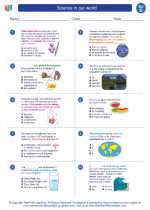Stratosphere
The stratosphere is the second layer of Earth's atmosphere, located above the troposphere and below the mesosphere. It extends from about 10 to 50 kilometers (6 to 30 miles) above the Earth's surface. The stratosphere is characterized by its relatively stable and dry air, and it contains the ozone layer, which plays a crucial role in protecting life on Earth from the harmful effects of ultraviolet (UV) radiation from the sun.
Key Features of the Stratosphere:
- Ozone Layer: The stratosphere contains a higher concentration of ozone (O3) than the other layers of the atmosphere. The ozone layer absorbs and scatters the majority of the sun's harmful UV radiation, preventing it from reaching the Earth's surface and protecting living organisms from its damaging effects.
- Temperature: Unlike the troposphere, where temperatures decrease with altitude, the temperature in the stratosphere actually increases with altitude. This is due to the absorption of UV radiation by the ozone layer, which leads to the heating of the stratospheric air.
- Jet Streams: The stratosphere is home to fast-flowing air currents known as jet streams, which can have a significant impact on weather patterns and aviation routes.
Importance of the Stratosphere:
The stratosphere plays a crucial role in maintaining the balance of the Earth's atmosphere and supporting life on our planet. Its most notable contribution is the protection provided by the ozone layer, which shields us from the harmful effects of UV radiation. The stratosphere also influences global climate patterns and the behavior of weather systems, making it an essential component of Earth's atmospheric dynamics.
Study Guide:
To understand the stratosphere more deeply, consider the following study points:
- Describe the composition and characteristics of the stratosphere.
- Explain the role of the ozone layer in the stratosphere and its significance for life on Earth.
- Investigate the impact of temperature changes in the stratosphere on atmospheric dynamics.
- Discuss the importance of jet streams in the stratosphere and their influence on weather patterns.
- Explore the ways in which human activities can affect the stratosphere, particularly in relation to ozone depletion and climate change.
Understanding the stratosphere is essential for comprehending the complex interactions that shape Earth's atmosphere and the delicate balance that sustains life on our planet.
[Stratosphere] Related Worksheets and Study Guides:
.◂Science Worksheets and Study Guides Fourth Grade. Science in our world

 Worksheet/Answer key
Worksheet/Answer key
 Worksheet/Answer key
Worksheet/Answer key
 Worksheet/Answer key
Worksheet/Answer key
 Vocabulary/Answer key
Vocabulary/Answer key
